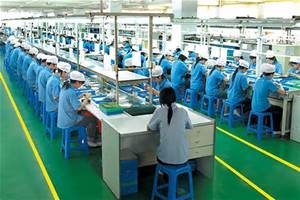Introduction
The World Trade Report 2018 (The Report), published by World Trade Organization, examines how digital technologies are transforming global commerce. The Report describes four digital technologies, namely artificial intelligence, the Internet of Things , additive manufacturing (3D printing) and blockchain, which have been achievable by the exponential rise in computing power, bandwidth and digital information.
The key findings of The Report are:
- Digital technologies are reshaping consumer habits by shifting purchases online through the widespread use of internet-enabled devices which provide consumers with direct access to online markets.
- It is estimated that, in 2016, the value of e-commerce transactions totaled US$27.7 trillion, of which US$23.9 trillion was business-to-business e-commerce transactions.
- Digital technologies allow for easier entry and increased product diversity, making it easier for firms to produce, promote and distribute their products at a lower cost.
- Digital technologies give rise to opportunities and challenges that may require the consideration of governments and international community in areas as diverse as investment in digital infrastructure, human capital, trade policy and regulation.
The Report also highlights that new technologies are likely to change established trade patterns as the importance of traditional sources of comparative advantages changes and new sources emerge.

Digital economies are likely to reinforce the importance of skills and capital endowment, as they are capital-intensive and skill-intensive. Artificial intelligence, 3D printing and advanced robotics could reduce the role of labour as sources of comparative advantages.

In contrast, physical infrastructure, border processes and geographical factors might become less relevant, which would benefit remote or landlocked economies, as well as economies with less-developed physical infrastructure and custom procedures.
Energy infrastructure will also become an important factor in defining comparative advantage in digital-intensive sectors, because the services that support digital technologies depend on storage devices, power supplies and cooling systems that consume vast amounts of energy.

Another factor that could become more important for trade patterns in the digital age is market size. Digital technologies benefit from access to large amounts of information, which may be advantageous to large developing countries like India, Indonesia and Nigeria.
With regard to institutions, the digitalization of trade may magnify their importance for comparative advantage, given that data privacy and intellectual property rights regulation rely on credible enforcement. However, new technologies may reduce the role of institutions for comparative advantage.

In addition, to these traditional sources of comparative advantage, new services will arise for trade digital-intensive products. The regulation of intellectual property rights, data flows and privacy are likely to be of particular importance, as well as the quality of digital infrastructure, since reliable and fast network access is becoming a necessity for conducting businesses.
Advantages and Opportunities
The advantages of digital technologies bring about opportunities and challenges for developing and developed countries alike. For instance, as digitalization increases the complexity of tasks performed by workers, developed economies may strengthen their competitive advantage in skill-intensive sectors. However, as new technologies diminish the importance of physical infrastructure, developing countries may also gain competitive advantage in the sectors most affected by the shift from physical to digitalization of trade.

For a country like Malaysia, which depends on labour-intensive export manufacturing sectors, 3D printing, in the long run, may substitute for traditional manufacturing methods, such as assembly of products. It would reduce the need for outsourced production and assembly, the number of production steps, and the need for inventory, warehousing, distribution, retail centres and packaging.
Value chain in a world of pervasive 3D printing may not only become shorter—with the emergence of production centres near every large customer base or near centre of innovation—but they might also look very different, being mostly based on cross-border exchange of data, in the forms of designs, blueprints and software, rather than on exchange of cross-border of materials services.
The Report is a must-read for business leaders and officials of government. The Report is enclosed below.